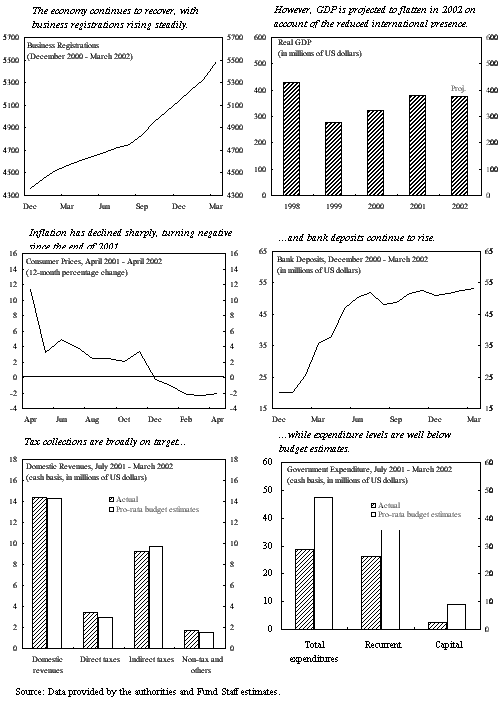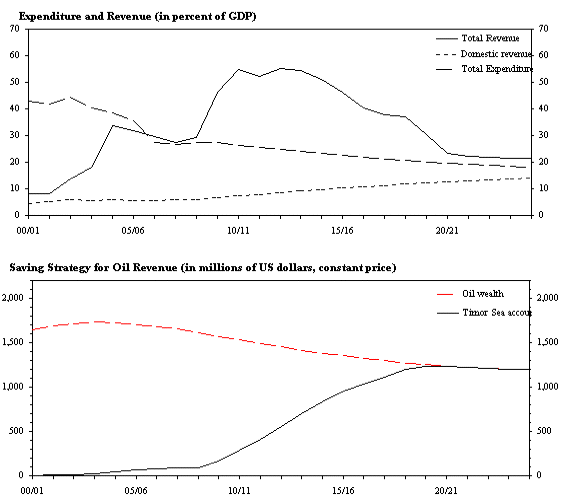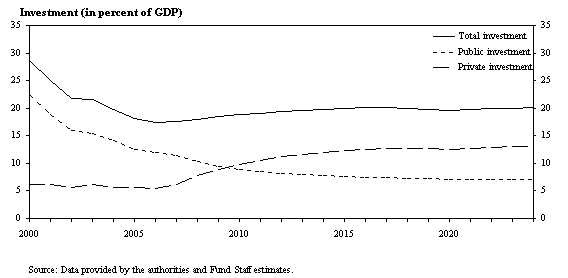Donors' Meeting on East Timor - Staff Statement by Stephen Schwartz, Deputy Division Chief, IMF Asia and Pacific Department
May 14, 2002
Deputy Division Chief, IMF Asia and Pacific Department
Dili, May 14–15, 2002
1. It is an honor to address this gathering in Dili, only days ahead of East Timor's long-awaited independence. The events leading up to this historic time are a tribute to the endurance of the East Timorese people, and to the commitment of their leadership in establishing the foundations of a stable and prosperous future. We at the International Monetary Fund are proud to have been part of the international effort to assist in East Timor's transition to independence. We look forward to continuing our support and to welcoming East Timor soon as our newest member.
2. As emphasized by other speakers, in many respects, the toughest challenges of nation-building and economic management are still to come. With this in mind, we support East Timor's call for the continued assistance of the international community, and request to donors for additional financing over the coming three years.
3. This occasion provides an opportunity to reflect upon what has been achieved, and to elaborate on the policies needed to address the remaining economic challenges. Building on the assessment we presented last December in Oslo, the remainder of this statement updates recent economic developments and prospects, and the longer-term macroeconomic framework for assessing fiscal sustainability. The statement also takes stock of progress in building institutions for sound economic management in East Timor, with a view to highlighting the challenge of maintaining and strengthening them.
I. Recent Developments and Near-Term Prospects
Recent Economic Developments
4. Economic conditions have continued to improve in recent months,
building upon a trend established since mid-2000 (Table
1 and Figure 1). While this progress is difficult
to measure precisely given the lack of statistics, available indicators
suggest that overall output has recovered to near pre-crisis levels.
Agricultural production, which accounts for around a quarter of the
economy's total output and up to three-quarters of employment, has been
largely restored. Anecdotal and survey evidence also indicate that the
economic well-being of most households has improved. These indicators
suggest that the recovery, which was initially concentrated in the service
sector in Dili, has become more broad-based.
5. At the same time, inflation has been steadily declining since mid-2000 and, indeed, turned negative at the end of 2001 (dollar-based CPI, 12-month inflation was -2 percent in April). This trend reflects an increase in the availability of goods, particularly food items. It is also indicative of the ongoing (real exchange rate) adjustment to the winding down of the international presence, which had driven prices and wages to unsustainably high levels. 6. In the financial sector, the most significant recent development has been an acceleration in the dollarization process, which has now reached its final stage. A survey by the Banking and Payments Authority (BPA) in March indicated that 90 percent of businesses nationwide are using the dollar as a means of payment, and that almost all major towns and districts are fully dollarized. This progress reflects the BPA's stepped up efforts for dollarization, including stricter enforcement, the rupiah exchange program, and the education campaign, all of which have been backed by a strong commitment at the political level. Nevertheless, development of the financial sector remains limited. Although commercial bank deposits continue to rise, the extension of bank credit is weak, reflecting the absence of adequate collateral and other risk factors. Access to banking services outside of Dili is still not available. 7. Recent fiscal developments indicate that revenue performance under this year's CFET budget is broadly on track, while expenditure has been running well below target. On the revenue side, direct taxes (income tax collection) are running slightly ahead of budget estimates, offset by a small shortfall in indirect taxes (border and service taxes). A continuing source of concern is a significant shortfall in power sector collections, which amounted to only 36 percent of pro-rata targets through March. On the expenditure side, spending has been running well below target due to a combination of factors, including: (i) a freeze on capital spending in anticipation of UNTAET asset transfers; (ii) a slow pace of recruitment of ETPA staff positions; and (iii) sluggish budget execution on goods and services. Taking these factors together, and assuming outstanding pledges of donor support are received by the end of the fiscal year, there would be a carryforward of up to $5 million. Near-term Economic and Fiscal Outlook8. Notwithstanding the progress in economic stabilization, the near-term outlook remains difficult. The wind-down of the international presence, albeit gradual, will soon have a dampening effect on activity. With the growth of the private sector being held back by a still unfavorable investment climate, overall output is likely to decline this year by ½ percent, and a further 2¼ percent in 2003. (These estimates are somewhat lower than our projections at Oslo; they are based on newly compiled GDP figures for 2000 and also incorporate the latest information on the evolution of public sector spending.) The projected decline is mainly driven by a contraction of public administration and related services, with other sectors, including agriculture, expected to grow more strongly. 9. With growth and employment prospects so heavily dependent on an expansion of the private sector, eliminating impediments to investment must remain a priority. It will also be important to maintain flexible labor market policies by allowing high wage rates, which remain well above those in neighboring countries, to adjust downward in response to changing labor market conditions. The attention these policies have received in the National Development Plan is encouraging. 10. The three-year budget outlook has been scaled back from the presentation at Oslo, and merits support (Table 2). Capital spending plans have been reduced in line with development priorities and demonstrated implementation capacity, giving rise to corresponding reductions in recurrent expenditure. Particularly commendable is the intention to cap the size of the civil service. The government's plans to raise domestic revenues at the start of the next fiscal year through small increases in selected indirect taxes—in line with recommendations of a recent IMF tax mission—also warrants support (these measures, which have been incorporated into the revenue projections, are expected to yield about $7 million over the three-year period). The resulting revenue projections are in line with the updated macroeconomic projections, and build in a conservative oil and gas revenue path (a "liquids plus gas" scenario, discounted by 25 percent to incorporate possible downside risks to prices and/or production delays). 11. The outlook yields a three-year cumulative external financing need of about $90 million for the CFET budget, some $78 million lower than the gap presented in Oslo. It is based on a continuation of the current policy to accumulate first tranche petroleum revenues. This is a sound strategy, which would help establish a principle of saving oil revenue and build a base of international reserves as a cushion against future oil market shocks. Thereafter, beginning in 2005/06, a broader medium-term savings/investment strategy should be adopted (as described below). II. Macroeconomic Framework and Fiscal Sustainability12. The budget outlook should also be assessed for its longer term sustainability. This can be done in the context of the macroeconomic framework developed for the Oslo donors' meeting, updated to take into account the revised budget figures and oil and gas revenue profile. The latter is higher than the path discussed in Oslo (in light of oil companies' plans to proceed with gas projects in the Bayu-Undan field), but is also more backloaded. While significant revenues are projected to commence in 2004/05, their scale would be more modest than previously envisaged, with more substantial revenues delayed until 2009/10. This backloaded revenue profile underscores the importance of maintaining fiscal discipline. 13. The analysis suggests that the three-year budget proposal would be consistent with a sustainable fiscal path over a longer time horizon (Figure 2). As before, this assessment hinges on the implementation of sound policies, including an effective management of oil revenues, which are needed to generate a stable macroeconomic environment and high rate of growth of the non-oil economy. In this regard, the National Development Plan's emphasis on a sound saving/investment strategy is welcome. 14. As was the case for the Oslo meeting, the assessment is based on a scenario consistent with a poverty reduction strategy. It envisages an ambitious growth target for the non-oil economy of 5-6 percent over the long term. The large fiscal deficits projected over the near term would yield to broad balances, and then surpluses, once significant oil revenues commence (Figure 2, top panel). For the scenario to be sustainable, and to avoid an over-reliance on oil revenues, domestic resource mobilization will be required. Over the longer term, implementation of revenue measures would ensure a steadily rising domestic revenue-to-GDP ratio. The fiscal strategy is sustainable in the sense that expenditure would be fully covered by domestic revenues and interest earnings on oil savings. 15. The scenario described above suggests an appropriate savings strategy for oil revenues (Figure 2, middle panel). The strategy would enable some oil wealth to be invested over time in projects with high rates of return (at least as high as the returns on financial savings), including on health and education, and would permit a public investment level sufficient to support the targeted economic growth rate (Figure 2, bottom panel). By the end of the projection period (when oil revenues dry up), it would also ensure that the combination of interest earnings on financial saving and domestic tax revenues are sufficient to cover public spending. 16. The East Timorese authorities have expressed interest in an oil fund, to help resist spending pressures and encourage that oil savings be invested wisely. We support this initiative, and have discussed with the authorities the core principles that should be followed in the establishment and operation of such a fund, including to integrate inflows and outflows within the overall budget framework; limit discretionary powers; invest the resources in safe, off-shore assets; and maintain high standards of professionalism and accountability. We are encouraged that the National Development Plan embraces these principles, as well as a number of sound operational details. 17. As emphasized in our statement in Oslo, it is important to note that the scenario described above is illustrative, as it is sensitive to underlying assumptions―oil prices and volumes, among others―and the supporting policy package. The following policy requirements, which are appropriately emphasized in the National Development Plan, remain essential to achieve an ambitious growth target: (i) maintenance of macroeconomic stability; (ii) maintenance of an open trade and investment regime; (iii) fostering a favorable investment climate through the adoption of a sound legal and regulatory framework and resolution of issues relating to land and property rights; and (iv) a strong tax effort over the long term to avoid an over-reliance on volatile oil revenues. From our discussions with the authorities, we remain confident that East Timor's leadership is committed to the set of policies required, including maintaining fiscal discipline. III. Institution Building18. The development of strong institutions is critical for effective economic management. The Planning Commission has been instrumental in performing a coordinating role and establishing priorities as outlined in the National Development Plan. The Commission should be congratulated for completing its large and complex task within such a limited time frame. 19. Significant progress has also been made in the other areas of institution-building in which the IMF has provided direct support. The Central Fiscal Authority (CFA) is now operating as a Ministry of Finance. The BPA is close now to operating as a full monetary authority, with the passage of the BPA regulation last November. And finally, an IMF-supported statistical advisor has been in place since early this year to help coordinate the creation of a statistical office. A number of challenges remain, chief among them:
IV. Concluding Remarks20. While the support of the international community and commitment of East Timor's leadership to establishing the conditions for economic growth and stability have achieved results, much remains to be done. In addition to maintaining macroeconomic stability and promoting an environment conducive to private sector development, a critical challenge will be to maintain and build upon the economic institutions that have been established. The IMF will continue to support East Timor in meeting these challenges and, with the membership process on well on track, we look forward to welcoming the new country as our 184 th member in the very near future. | ||||||||||||||||||||||||||||||||||||||||||||||||||||||||||||||||||||||||||||||||||||||||||||||||||||||||||||||||||||||||||||||||||||||||||||||||||||||||||||||||||||||||||||||||||||||||||||||||||||||||||||||||||||||||||||||||||||||||||||||||||||||||||||||||||||||||||||||||||||||||||||||||||||||||||||||||||||||||||||||||||||||||||||||||||||||||||||||||||||||||||||||||||||||||||||||||||||||||||||||||||||||||||||||||||||||||||||||||||||||||||||||||||||||||||||||||||||||||||||||||||||||||||||||||||||||||||||||||||||||||||||||||||||||||||||||||||||||||||||||||||||||||||||||||||||||||||||||||||||||||||||||||||||||||||||||||
IMF EXTERNAL RELATIONS DEPARTMENT
| Public Affairs | Media Relations | |||
|---|---|---|---|---|
| E-mail: | publicaffairs@imf.org | E-mail: | media@imf.org | |
| Fax: | 202-623-6220 | Phone: | 202-623-7100 | |





